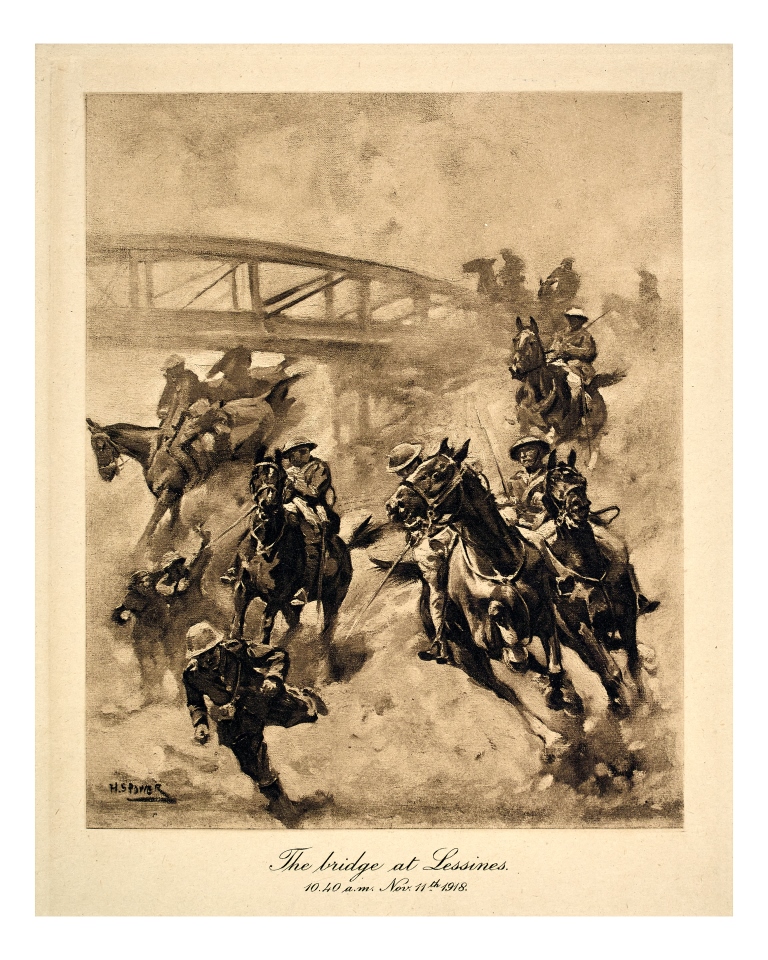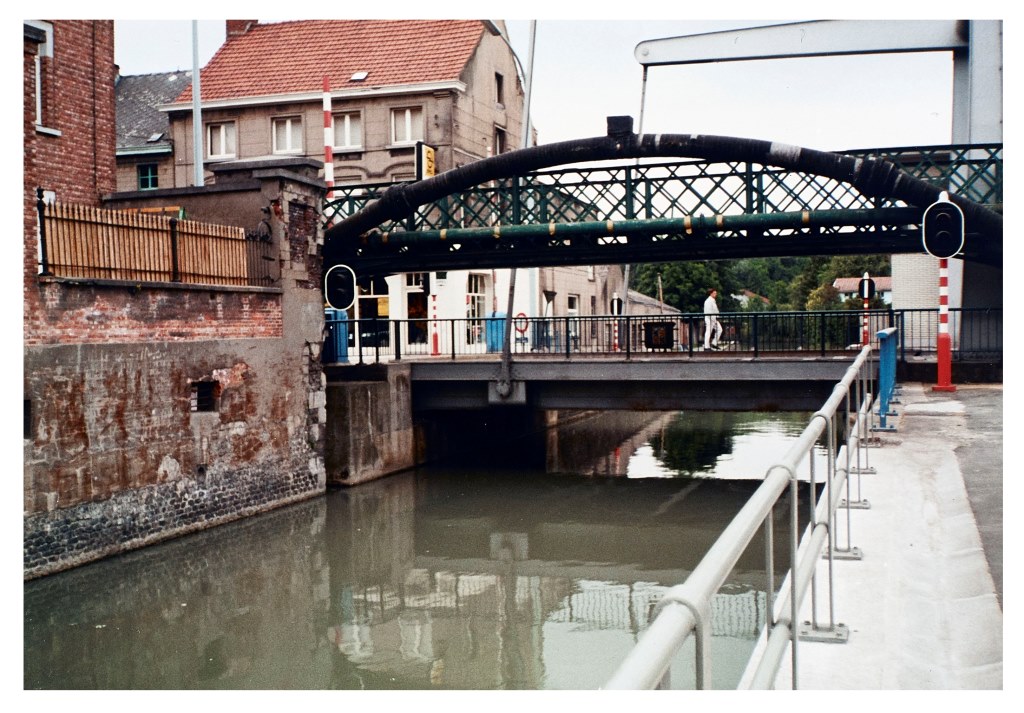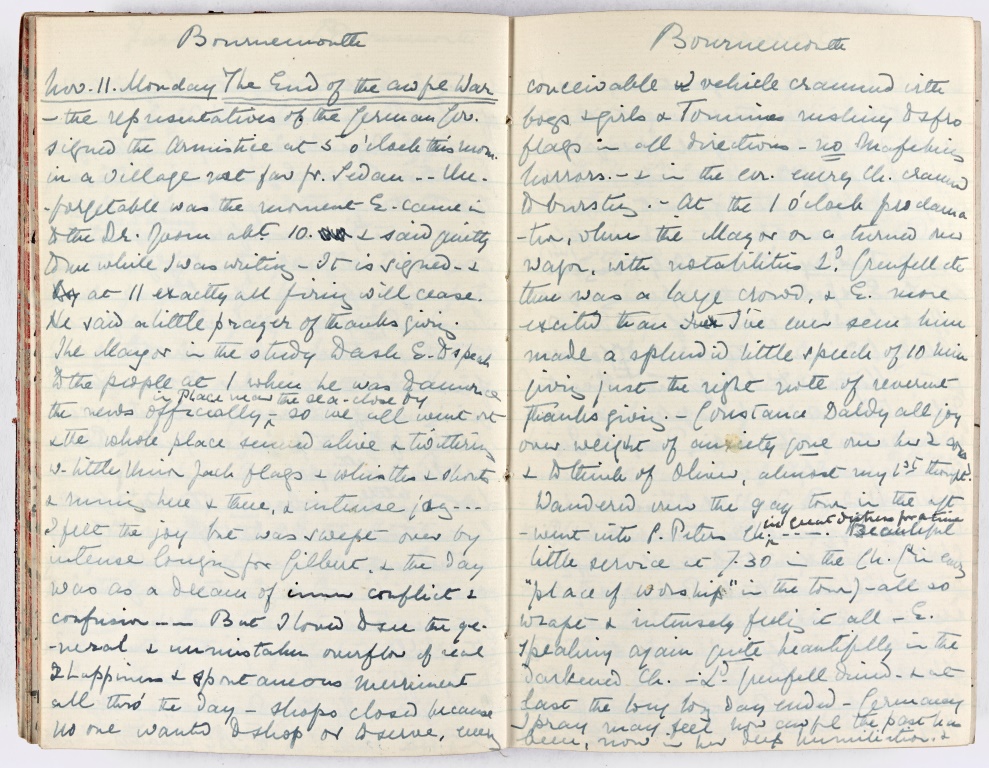Armistice Day 1918
- 11th November 2018
| After several days negotiation a ceasefire was agreed between the Allies and the Germans at 5am on 11 November 1918 to come into effect at 11.00 that day. British Commanders were told ‘Hostilities will cease at 1100 hours today, 11th November. Troops will stand fast on the line reached at that hour …’ German troops received a similar message from their commanders.
The Last British action on the Western Front
General Freyberg who commanded the British 88th Brigade tried to secure as much ground as possible before the Armistice came into effect and ordered the 7th Dragoon Guards forward to attempt to capture the bridge over the river Dendre at Lessines, Belgium to prevent it from being demolished by German troops. He himself went with the troops on the 10 mile gallop to the town. Lessines had been occupied by the Germans since October 1914. The arrival of British cavalry troops in the town galvanised the local population who joined in the action and the advance party reached the bridge just before 11.00 taking three officers and 103 other ranks prisoner. The action was later captured by war artist H S Power. The road leading to the bridge was later named after General Freyberg.  The Bridge at Lessines 10.40 am Nov 11th 1918
 The Bridge at Lessines 75 years later in 1993
Personal recollections There was great jubilation that war over. In Britain Big Ben sounded. Cheering crowds in the centre of London sang songs and the King and Queen emerged onto the balcony of Buckingham Place. In Worcestershire bells rang, flags were put out, church services were held and crowds of people were out on the streets. There was similar rejoicing across the country, though for those who had lost family and friends the celebrations were bitter sweet.
Lavinia Talbot One of the people who kept a record of Armistice Day 1918 was Lavinia Talbot. She was in Bournemouth at the time and remembered clearly the ‘overflow of real happiness & spontaneous merriment.’ She recorded in her diary that ‘The whole place seemed alive & twittering w[ith] little Union Jack flags & whistles & shouts & running here & there & intense joy …’ She also noted that the shops closed, vehicles crammed with people rushed in all directions and her husband Edward gave a speech. But for Lavinia too the day was tinged with sadness because of the ‘intense longing’ she felt for her youngest son Gilbert who, having been killed in battle three years earlier, would not be one of the soldiers returning home.  Lavinia Talbot’s diary pages for 11 Nov 1918
Winifred Barber Winifred Barber was a child living in Birmingham during the First World War. At the time of the Armistice she was seriously ill in bed with the Spanish flu, but despite this she remembered the day well. In particular she recalled the announcement being signalled by a sound of a maroon and the arrival of the doctor to check up on her who referred to it as ‘the sweetest music I ever heard’.
Click here to listen to Winifred recalling the announcement of the Armistice
News spread of the Armistice. Winifred recalled her father going out to get a Union Jack to mark the occasion and the sounds of the joyful crowds in her neighbourhood. Her brother Ted brought a red, white and blue firework to set off in the evening and Winifred, still too ill to leave her bed, was propped up to watch him set it off.
Click here to listen to Winifred recalling celebrations on Armistice Day
Acknowledgements
Copy of painting of action at Lessines 11 Nov 1918 found amongst Worcestershire War Memorial Committee records. Original probably by war artist H S Power, but location of original and copyright owner unknown. If you have any further information please get in touch.
Photo of Lessines Bridge 1993 with kind permission of M Tohill
Lavinia Talbot’s diary extract with kind permission of Lord Cobham
Extracts from recording of Winifred Barber’s reminiscences with kind permission of Mike Dickens
For further information about the events at Lessines on 11 November 1918 see https://en.wikipedia.org/wiki/7th_Dragoon_Guards and http://www.lessines-14-18.be/?p=103
For information about General Freyberg see https://en.wikipedia.org/wiki/Bernard_Freyberg,_1st_Baron_Freyberg
For information about artist H S Power see https://en.wikipedia.org/wiki/Harold_Septimus_Power
Maggie Tohill |
Post a Comment